

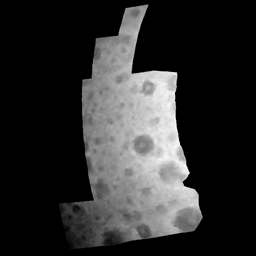


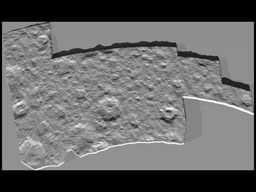
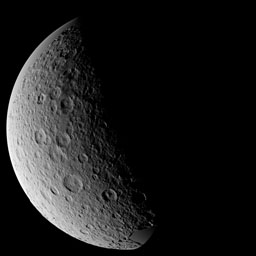
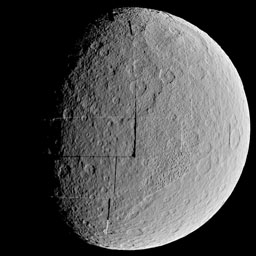
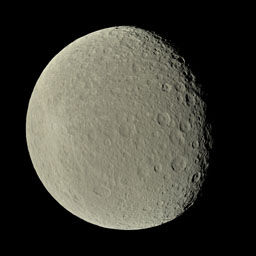
Stereo magic: A DEM of Rhea
Unlike Jupiter's satellites it is not possible to get acceptable renderings of Saturn's icy satellites without using a digital elevation model (DEM). The main reason is that the craters on Saturn's satellites are far bigger and deeper relative to the satellites than the craters (and topography in general) on Jupiter's satellites. So even though using only a texture map works well in the majority of cases for Jupiter's satellites it is not an acceptable option when rendering Saturn's satellites.
Years ago I wrote primitive shape from shading software to generate a crude DEM of Mimas but I was never happy enough with the result. The biggest problem was horizontal lines. Once Cassini arrived at Saturn sufficient coverage became available of its satellites to attempt something else: Using stereo imagery to generate DEMs. This required a lot of work, much of which involved software development and various optimizations because early versions of my stereo software were far too slow. I used images of Rhea since it has the best global imaging coverage of any of Saturn's satellites. Once things started working properly I realized there was enough coverage for a near-global DEM of Rhea.
After a lot of work I now have an almost global DEM of Rhea. Only the north polar region and small spots closer to the equator are missing. Hopefully most of these gaps can be filled from future Cassini imagery.
Since Rhea's brightness and albedo isn't completely uniform the final step required to get realistic renderings was to create a color and albedo map. That map is available here.
What remains is to fill the DEM's gaps, hopefully with future imaging data. The resolution of the DEM also isn't uniform and parts of it look noisy. The only way to fix some of these problems is lots and lots of work in Photosop.
A few renderings showing the DEM's progress: